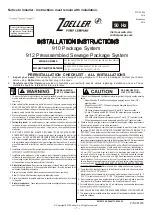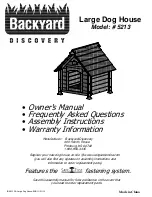
40
41
6|
Application instructions & Self-help
Application instructions & Self-help
|6
Application instructions & Self-help
6.1. Application of different inhalation solutions
6|
Caution
Basically, inhalation therapy is always carried out in consultation with the attending veterinarian. He carries out
the anamnesis, makes the diagnosis and initiates a therapy. All inhalation solutions are to be used only after
release by a veterinary surgeon in such a way, as this recommends it! Please always follow his instructions!
There are now numerous inhalation solutions for a wide range of applications. Which inhalation solutions are
used in case of illness or for prophylaxis, how they are composed and concentrated and how to use them, we
have summarized for you in this chapter. Please note that this chapter refers exclusively to inhalation solutions
used in Germany. Inhalation solutions used abroad may differ.
FREELY AVAILABLE INHALATION SOLUTIONS
Natrium chloride (NaCl) / isotonic saline solution
Ingredients: Natrium chloride
Concentration: 0.9 %, isotonic concentration
Properties:
moisturizing, nourishing and slightly expectorant
Side effects:
none known
Brine and other salt solutions
Ingredients: Natrium chloride and possibly other salts and minerals (e.g. Dead Sea brine, Emser salt, etc.)
Concentration: over 1 %, hypertonic concentration
Properties:
strongly expectorant, anti-inflammatory and decongestant
Side effects:
may be irritating and drying
Inhalation solutions with physical mode of action
Ingredients:
ectoin, tacholiquin, etc.
Mode of action: Reduction of viscosity and reduction of surface tension, e.g. for mucus solution, moistening and care.
Side effects:
none known
Tip
Isotonic“, „hypertonic“ or „hypotonic“ refer to different concentration ratios. While in isotonic solutions the mineral
concentration is the same as in human cells, in hypertonic solutions the mineral concentration is higher and in
hypotonic solutions it is lower than in cells. This causes isotonic inhalation solutions (such as NaCl 0.9%) to have
a nurturing and moisturizing effect on the cells due to the even exchange of fluids, while hypertonic inhalation
solutions (such as Dead Sea Brine 2.5%) remove moisture from the cells. Hypotonic solutions (such as distilled
water) cause too much water to enter the cells and cause them to burst by swelling. Therefore, hypotonic solutions
should never be used for inhalation!
This means that the same active ingredient can have a different mode of action due to a different concentration
ratio. An example of this is sodium chloride. Sodium chloride is often mistakenly equated with isotonic saline so-
lution. In fact, sodium chloride can be isotonic or hypertonic. Only a concentration of 0.9% is considered isotonic.
Anything above this, i.e. already above 1 %, is referred to as a hypertonic mixing ratio. This means that sodium
chloride can be used on the one hand (isotonic) for humidification, but on the other hand (hypertonic) to withdraw
fluid from the respiratory tract.
PRESCRPTION MEDICATIONS
Antiallergics
Active ingredients: cromoglicic acid, etc.
Use: To reduce the symptoms of allergic diseases
Antibiotics
Active ingredients: gentamicin, etc.
Use: For infectious diseases caused by bacteria, not for viral diseases
Anticholinergics (bronchodilators)
Active ingredients: Ipratropium bromide, etc.
Use: For the treatment of diseases with spasmodic constriction of the larger bronchial tubes.
Glucocorticoids (bronchodilators)
Active ingredients: budesonide, dexamethasone, salbutamol, etc.
Use: cortisone with anti-inflammatory, antispasmodic and decongestant effect on the small bronchi and bronchioles
Expectorants / sectretolytics
Active ingredients: acetylcysteine, ambroxol, etc.
Use: cough and mucus expectorant
Содержание SaHoMa-II HM-2000-1
Страница 33: ...Notes 60 Space for your notes...











































